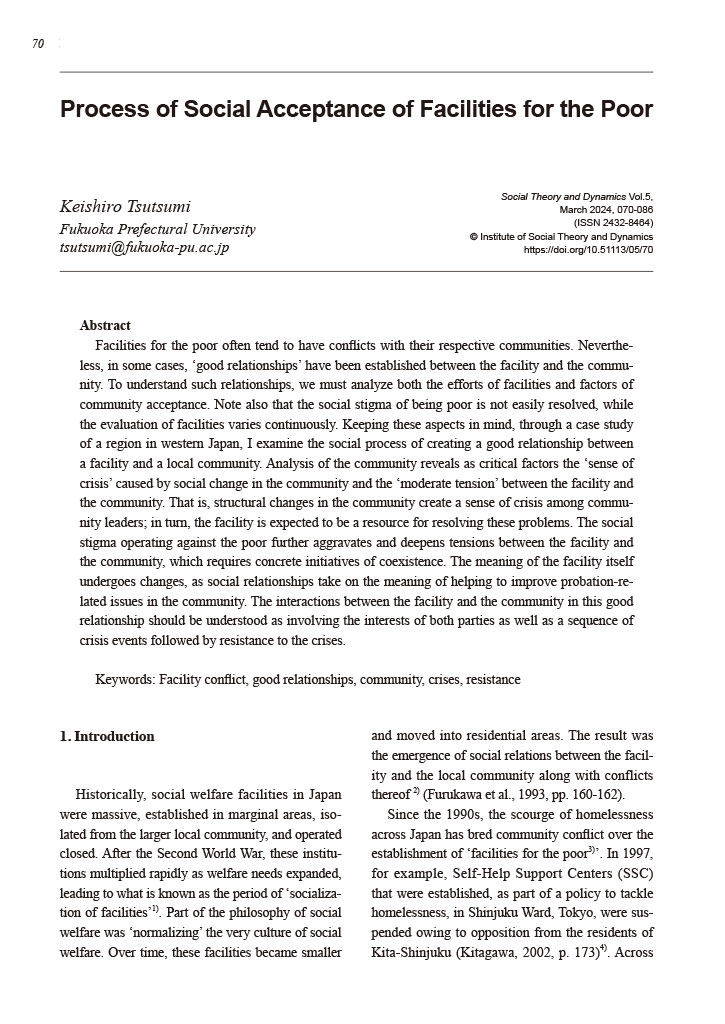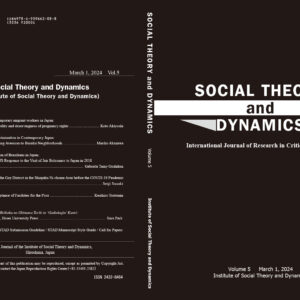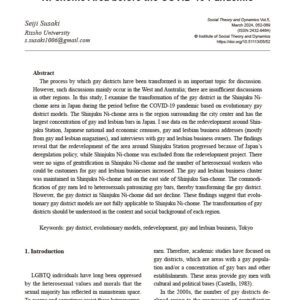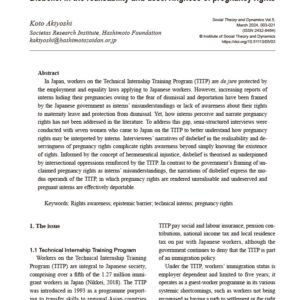Description
Facilities for the poor often tend to have conflicts with their respective communities. Nevertheless, in some cases, ‘good relationships’ have been established between the facility and the community. To understand such relationships, we must analyze both the efforts of facilities and factors of community acceptance. Note also that the social stigma of being poor is not easily resolved, while the evaluation of facilities varies continuously. Keeping these aspects in mind, through a case study of a region in western Japan, I examine the social process of creating a good relationship between a facility and a local community. Analysis of the community reveals as critical factors the ‘sense of crisis’ caused by social change in the community and the ‘moderate tension’ between the facility and the community. That is, structural changes in the community create a sense of crisis among community leaders; in turn, the facility is expected to be a resource for resolving these problems. The social stigma operating against the poor further aggravates and deepens tensions between the facility and the community, which requires concrete initiatives of coexistence. The meaning of the facility itself undergoes changes, as social relationships take on the meaning of helping to improve probation-related issues in the community. The interactions between the facility and the community in this good relationship should be understood as involving the interests of both parties as well as a sequence of crisis events followed by resistance to the crises.





